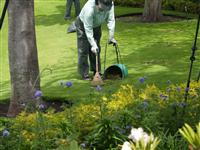
Learn the practical side of horticulture at management level
Take the next step in your career: develop practical skills in the management of a variety of horticultural situations required of the horticultural manager or the management of your own business that you would normally learn working under the supervision of a horticultural expert. A step on from Practical Horticulture 1 but a course that can be taken in its own right by those with fundamental horticultural knowledge.
This course will help you to stay ahead of the competition and fulfill your managerial or business aspirations.
Following is an excerpt from lesson 1:
Work planning and project management is an important aspect of the type of work that would be generally carried out by the professional horticulturist. It may be in diverse areas within the horticulture industry i.e. a planting program, plant sales program, landscape project, re-vegetation project, sports or turf management, irrigation and drainage systems implementation, production planning (crops and nursery), conservation of natural resource areas, conserve a heritage area and so on. Project management may be under the broad direction of superiors in certain situations however self directed application of knowledge that has substantial depth is expected at this level.
Some supervision is required for this course by an independent horticultural expert such as your work manager or other expert. The course contains all the tips to develop excellent practical skills in the management of a variety of horticultural situations. It covers subject areas such as: horticultural calculations, propagation management, hard and soft landscape management, planning - identifying needs for management of horticultural sites, identifying plant tissue and much more.